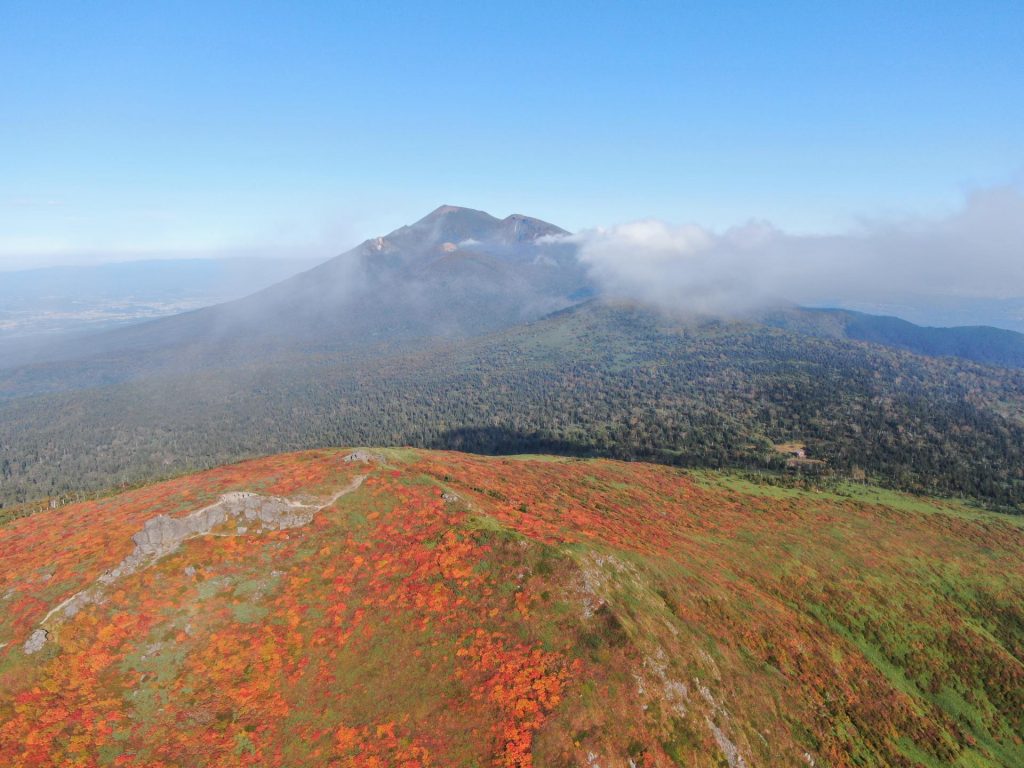
Early autumn is arguably the best time of year to experience the glory of exploring Japan’s volcanic landscape on foot. Every year hordes of people take on the challenge of hiking Mt. Fuji, leading to a parade of GoreTex from the trailhead to the summit of the most climbed mountain in the world. An alternative to this spectacular, yet overcrowded experience, can be found in Japan’s deep north, on the active volcano known as Nanbu Kata Fuji, or more commonly, Mt. Iwate.
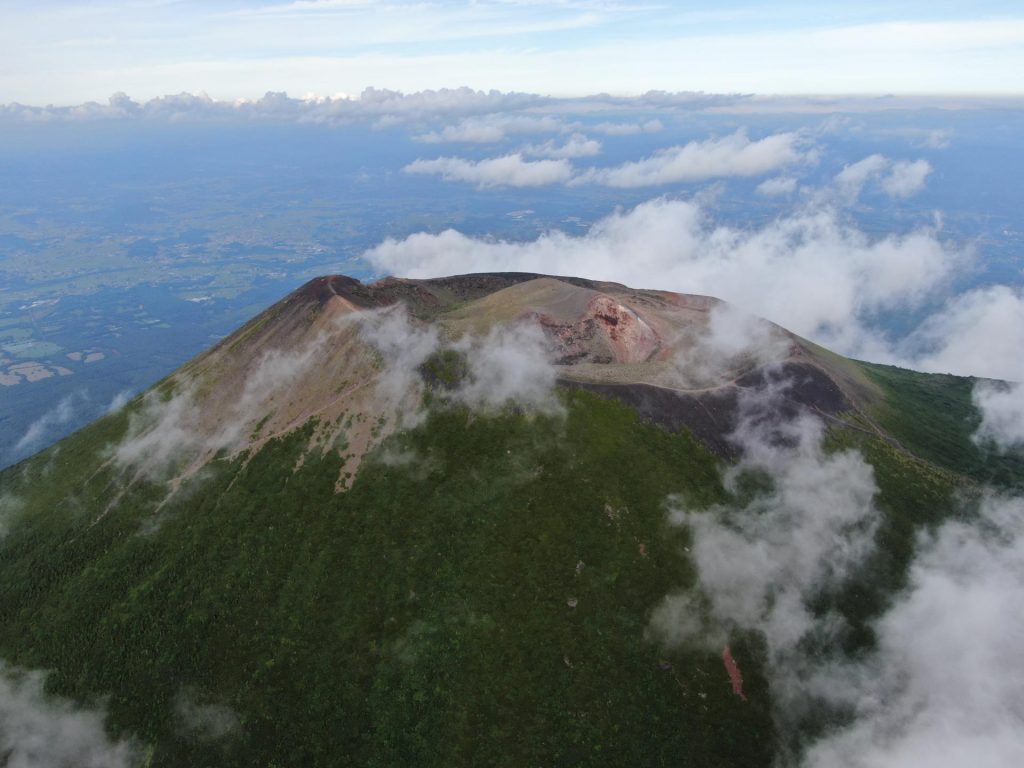
Mt. Iwate (岩手山) is called Nanbu Kata Fuji (南部片富士), or “the one-sided Fuji of Nanbu” (Nanbu being the feudal name of the area), because the eastern flank of the mountain resembles the iconic shape of Mt. Fuji. The variation in landscape and rich history of this volcano, which you can experience through any of the longer trails, rivals—or even surpasses—what you might find on Mt. Fuji. But be warned, the physical challenge of the longer trails exceeds that of the most popular trails up Fuji-san in distance and ascent.
First, a little background. About 1,200 years ago a great general was sent north to subdue the Emishi (the lost tribes of northern Honshu) and encountered Mt. Iwate on his campaign. He established a shrine near the summit to appease local demons and it has been revered as a sacred mountain ever since. Later, Mt. Iwate became a focus of Buddhist worship, and even now the crater on the summit is ringed by 66 Buddhist statues of Kannon, the Bodhisattva of Compassion.
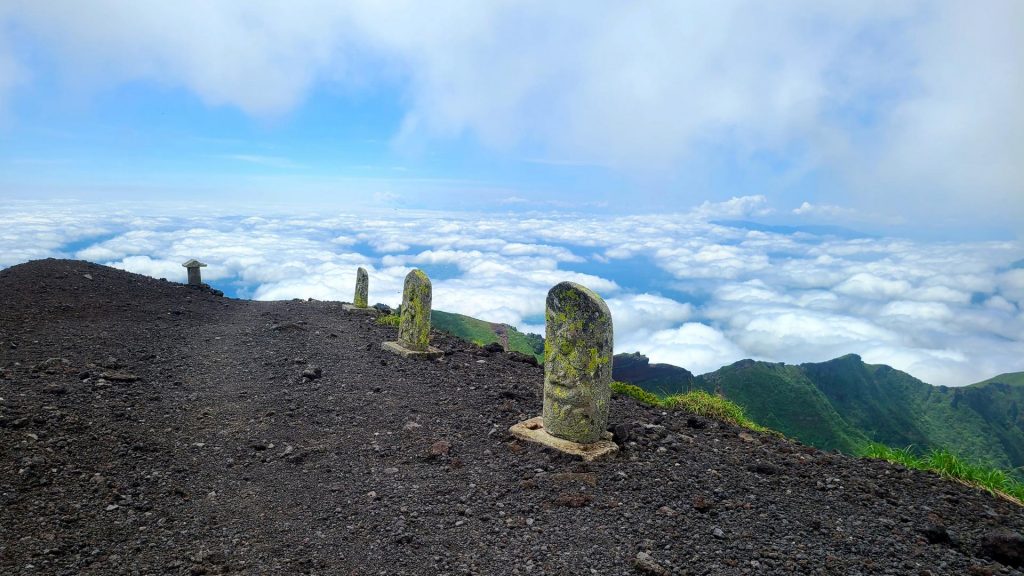
During the Edo Period, yamabushi (ascetic monks) would ascend the mountain at night, worship at sunrise, and pray for a bountiful harvest and good health for the surrounding villages. With the dawn of the Meiji Era toward the end of the 19th Century, Buddhism was suppressed and the temples became Shinto shrines, though the Buddhist statues remain on the summit. Many locals still hike it as a personal pilgrimage praying both to the Shinto and Buddhist divinities at the peak.
There are seven main trailheads around Mt. Iwate. While they all reach the summit, the diversity of landscapes, physical challenge, and time required completely vary. Nanataki Trail (七滝コース), which, while not (quite) the longest, offers four distinct areas to explore—leaving hikers feeling like they’ve hiked four mountains, not one. (See “Other Trailheads” for a brief outline of the other trails on the mountain.)
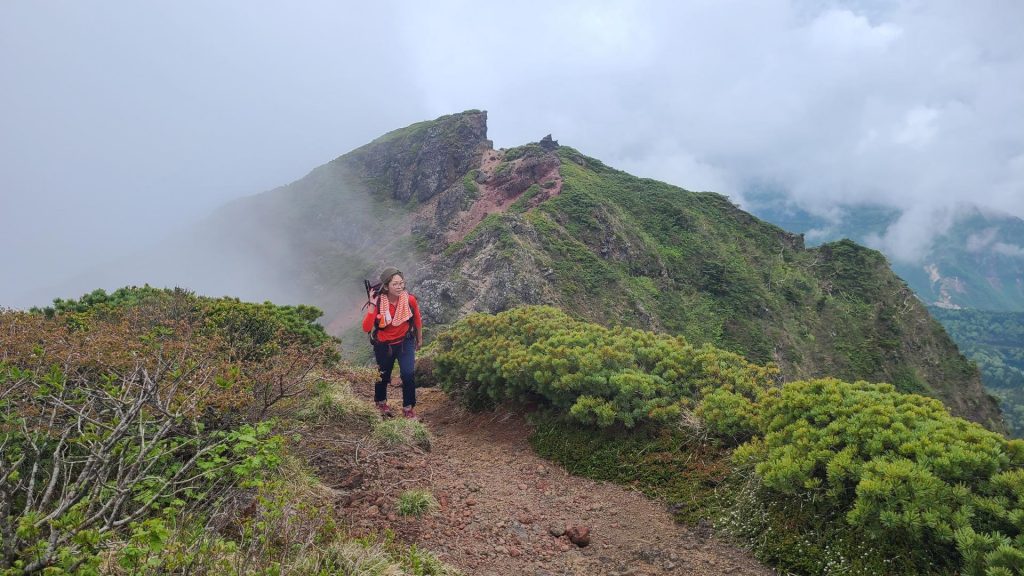
The Nanataki Trailhead is located near the Prefectural Forest Campground in Hachimantai. The first section of the hike is a gradual incline through a deciduous forest, which explodes into color in early October. You’ll pass a number of waterfalls during the first hour, the largest of which is Nanataki Falls, from which the trail derives its name. People hike out to this waterfall in the winter as well when it freezes into massive ice falls. During the summer, or a hot day in early fall, you can strip down and cool off in the river just below the falls—just don’t forget a towel!
The next section is Ojigokudani (大地獄谷), or “The Great Hell Valley.” It’s a steep ascent over an active volcanic area where sulfur vents are belching steam and the ground itself is a mixture of bright yellows, oranges and reds. About 130 years ago there was a sulfur mine here, though it was abandoned when larger facilities were opened to the north. You might notice a small bubbling caldera to the right of the trail created by a minor volcanic eruption in 1930.
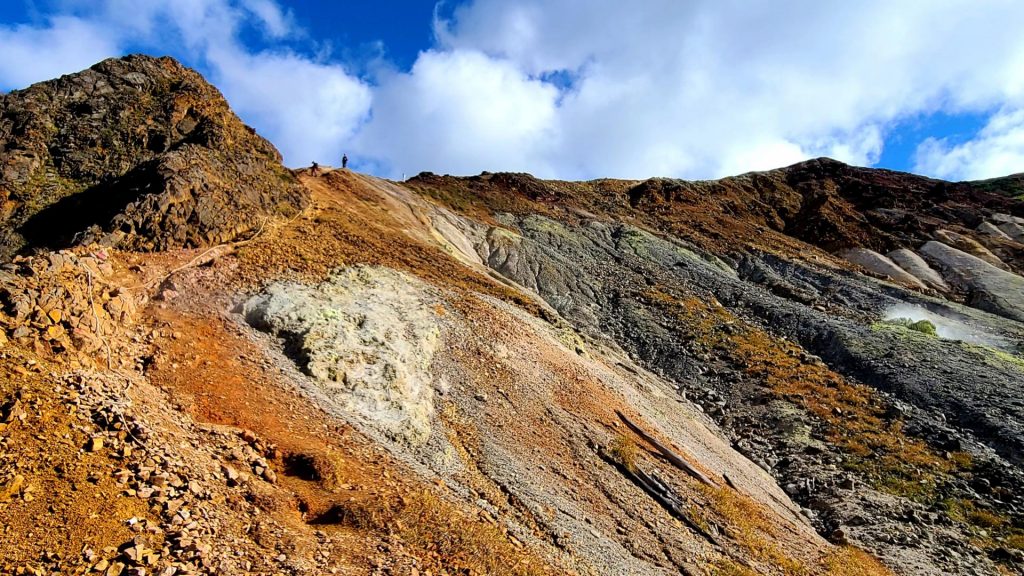
This will bring you to the first junction, where you’ll want to turn right, toward Onigajo (鬼ヶ城)—the Demon’s Castle. (Note, you’ll return from the other direction on your way back down.) After just a few minutes you’ll reach the ridgeline and begin what many people consider the most stunningly beautiful section of the hike. The Demon’s Castle was indeed believed to be the home of demons, and the rugged cliffy ridge walk does not disappoint. Many people I’ve taken over the last few years (including local Japanese people) have exclaimed how they had no idea this dramatic landscape existed in Japan. There’s a bit of scrambling and climbing, but nothing requiring special gear. The main challenge is to keep moving when you want to stop and gaze in slack-jawed awe at the views, or take photos every two minutes.
The summit area of Mt. Iwate is actually rather similar to that of Mt. Fuji in that you walk a circuit along the rim of the volcanic crater in the center. This part feels like paradise, and is often above the clouds. If you can, spend a night at the 8th Station lodge, so you can enjoy a sunset and sunrise to rival anything you might experience on Mt. Fuji. (It is ¥1,700 for a spot at the lodge; spring water for drinking, nice bathrooms are available—and a wood-burning stove.)
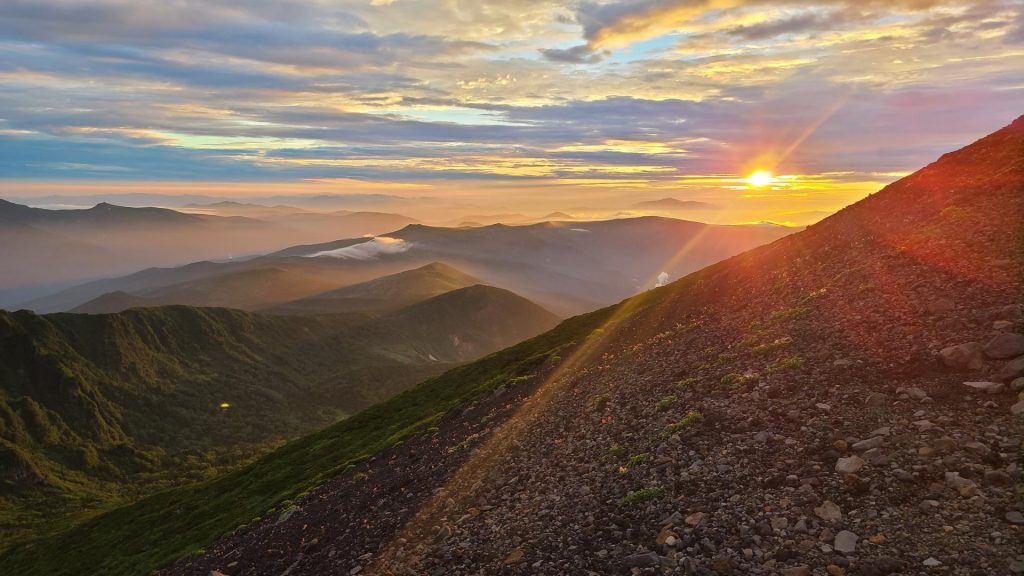
If you’re with a guide that can arrange transportation, returning down a different trail is a great way to see more of the mountain, and there’s a slightly different route going back to the Nanataki Trailhead as well. Instead of doing the ridge walk across the Demon’s Castle, you can go directly down through the valley called Ohanabatake (御花畑) or “flower field,” and enjoy the view of the towering cliffs from below. This trail meets back up with the original trail just above the Great Hell Valley.
It’s just under 20K round trip with an ascent of around 1,600 meters. Depending on your pace it can take 8 to 12 hours for most. If you don’t want such a strenuous adventure, there are a number of shorter trails, or ideally, you could hike up one day, spend the night in a lodge, and hike down in the morning after seeing the sunrise.
Other Trailheads
Umagaeshi (馬返し): This is the shortest and most popular route; about 11K round trip with an ascent of 1,440 meters. There are water sources at the trailhead and 8th Station, so you only need to bring one or two liters of water with you. It splits into the new and old trails. The new trail is easier and goes through the forest, while the old trail goes out over the rocky terrain with panoramic views of the surrounding valley, but has more exposure to the sun.
Omisaka (御神坂): This trail is about 12K with an ascent of 1,550 meters. The first half is through the forest, with the upper part going above the tree line. There is often a steep area with slippery snow towards the top of this route that doesn’t melt until late June.
Yakehashiri (焼け走り): One of the most popular routes that is about 13K with a 1,500 meter ascent. This area is a long gentle ascent up volcanic gravel for rather long parts. Flower lovers favor this route in late June and early July for the numerous alpine and volcanic flowers here.
Matsukawa (松川): The longest of the main routes. Round trip is roughly 24K with an ascent of 1,550 meters. Only recommended for advanced hikers or those planning to spend the night. It crosses Mt. Kurokura, another active volcano, and the Demon’s Castle—it’s all glory and adventure!
Amihari (網張): The Amihari Ski Resort operates the ski lifts during the fall for visitors both hiking all the way to Mt. Iwate, and those that just want to enjoy the beauty of the fall colors from the ridge above the resort. Distance and ascent depend on if you use any of the three lifts on your way there or back. Better to spend a night if you start from here given the distance and time involved.
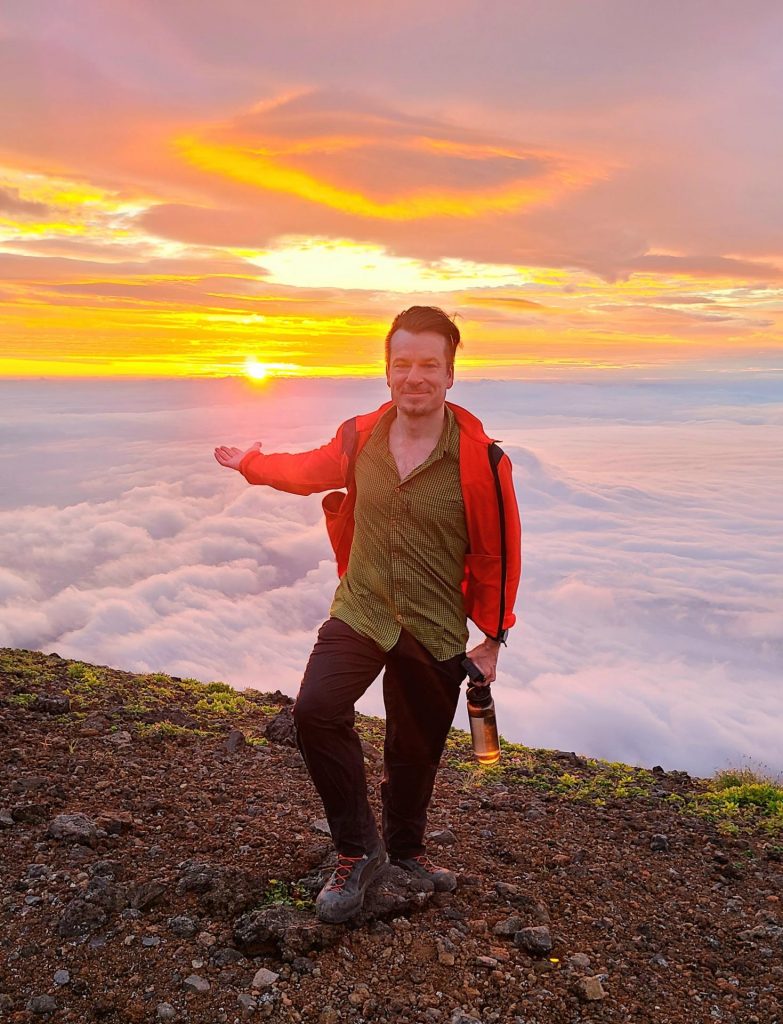
About the Author
Quinlan Faris has been living in Japan for more than 20 years, the last 12 in the wilds of the north. He is based in Morioka, Iwate, where he wears a variety of hats—working as a guide, inbound tourism advisor, narrator, and video creator—all while running a small Airbnb out of the building where he lives. You’ll most likely find him up a local volcano, hiking through a storm or foraging for wild edibles along a mountain stream to feed his Airbnb guests or entertain his YouTube subscribers. Follow his adventures at youtube.com/c/GoNorthJapan and on Instagram @quinlan.




